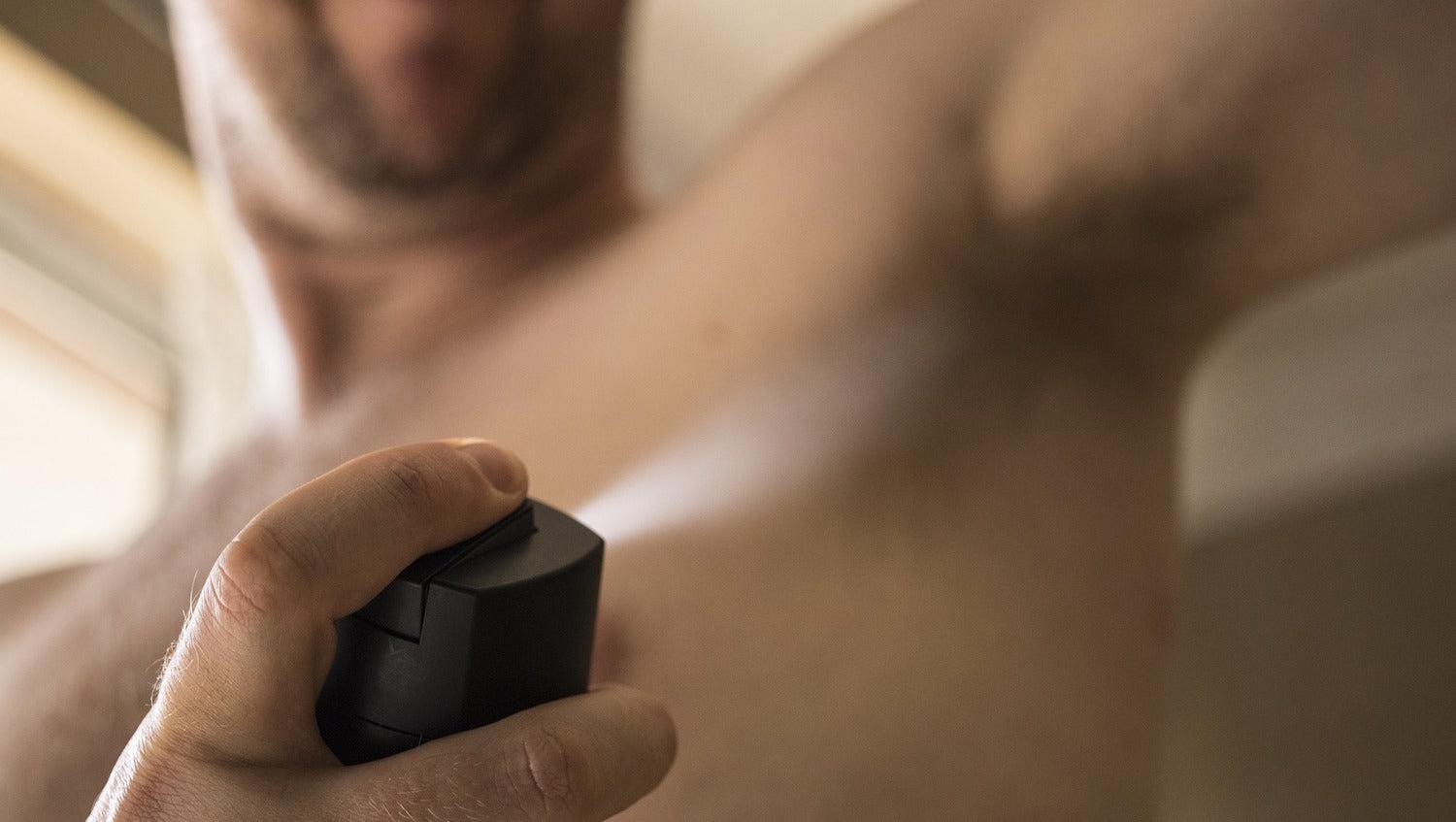Your Cart is Empty

Believe it or not, there is a wrong way and a right way to apply antiperspirant or deodorant. It might seem impossible to apply deodorant or antiperspirant incorrectly – after all, you’ve been wearing antiperspirant since your teens, so you must know how to do it, right?
Deodorants and antiperspirants may seem the same at first glance. But they actually have totally different functions, and slightly different ways to properly apply them.
Deodorants work to combat body odor, which is produced when sweat mixes with bacteria found on the skin. On the other hand, antiperspirants target sweat glands to block sweat directly and recommended for people who encounter issues with sweating. Most antiperspirants also offer odor protection.
If you want to learn – or at least double-check you're doing it right – how to apply antiperspirant or deodorant, this post will help. We'll cover the differences between applying deodorant and antiperspirant by type (spray, stick, or roll-on) as well as when and how much antiperspirant or deodorant to apply.
This post was originally written in February 2019, and was updated in March 2021.

If you struggle from excessive sweat, you're likely already using antiperspirant rather than deodorant to try and manage that. But antiperspirant and deodorant should be applied differently – and antiperspirant adds a bit more nuance to your application routine.
It's easy to go overboard with antiperspirant. In fact, you only need a thin layer of antiperspirant to get the full effect – not a slathering-on. Apply a thin layer of antiperspirant to completely dry armpits. If you take your showers at night, make sure your underarm is 100% dry, as the humidity in the bathroom can keep your pits damp.
Apply your antiperspirant at night. Yes, you read that right – at night. Antiperspirant takes time to set in. When you apply it in the morning, you begin to sweat before it has time to start working, and that removes the antiperspirant you’ve applied.
If you apply antiperspirant before bed at night, you accomplish two things:
You can also add another thin layer of antiperspirant when you wake up and allow it to dry before you get dressed.
 1. Applying Stick Antiperspirants
1. Applying Stick AntiperspirantsIf you're using a stick antiperspirant, you're probably doing it right – assuming you adjust your hygiene and timing routine. To ensure you apply only a thin layer of antiperspirant, apply two or three strokes of antiperspirant to each underarm. If your armpits are properly dry when you apply your stick antiperspirant, you shouldn't need to let it dry at all; if you do feel damp right away that means you need to get your armpits completely dry before applying the next time.
As with aerosols, you must give your rolls-on antiperspirant a good shake. Apply one or two strokes and allow it to dry before dressing.
When using a roll-on, it is very important to allow the antiperspirant to dry completely before getting dressed. If you pull on clothes or your sleepwear right after applying it, the antiperspirant can be wiped off by your clothing, making it ineffective and dirtying your clean clothes.
To apply antiperspirant spray correctly, you must shake the can thoroughly to mix the ingredient. Shaking the spray contain evenly disperses the antiperspirant in the can so that you don’t just get a blast of air. Hold the can about 6 inches from your pit to get the right application. Use short, sharp sprays once or twice under each arm.
Now, let’s take a look at how to apply deodorant properly. Regardless of the type of product you use, it’s always best to put on your deodorant after showering. Make sure you apply the formula to clean and completely dry armpits. (There is no need to go overboard as you can reapply throughout the day as needed.)
There is now an extensive range of deodorant options so you can experiment with different scents (or scentless options), as well as deodorants for sensitive skin and all-natural formulas.
The trick to applying most deodorants follows the advice of Goldilocks – not too much, not too little, but just the right amount. Like antiperspirant, how much deodorant to use depends on which type you're using. Generally speaking though, you don't need as much as you think – if you're a five-swipe guy, that's probably too much.
Contrary to popular belief about when to use deodorant, the best time of the day to apply deodorants is actually before you go to bed – just like for antiperspirants. Our sweat ducts are less active in the evening and while we’re sleeping. As such, applying deodorant at night allows the formula to work most effectively. Deodorant works best with minimal moisture, so it’s important to make sure your armpits are totally dry after showering and before application.
Stick deodorants typically have a dial that you turn to dispense the formula. For those wondering, “How much deodorant should I put on?” We recommend 2-3 swipes under each arm for the best results. If you find that residue is transferring to your clothes, it’s likely that you’re applying too much. In this case, try reducing the amount to avoid build-up and potential deodorant stains on your clothes.
Roll-on deodorants, as the name suggests, contain a roller ball that releases a small amount of formula when moved over the skin. When considering how much deodorant to apply with a roll-on, 2-3 swipes is a good place to start. Be sure to cover the entire underarm area for even coverage and allow the formula time to dry before putting on clothes.
Advice for how to apply deodorant in spray form is a little different. First, give it a good shake to ensure the ingredients are well mixed. Then hold the can around 6 inches (or 15cm) from your underarms and give a short, sharp spray – around 2 seconds on each armpit. Remember, if you find yourself in a cloud of aerosol, then you’ve gone too far!

Using your new routine for applying antiperspirant or deodorant in the evening will help you reap the full benefits of your antiperspirant. You can also use these tips to assist in your war against sweat.
So: did you already know how to properly apply your antiperspirant or deodorant? Or did you learn something new to make your deodorant or antiperspirant applying routine even more effective?

When searching for a natural odor-fighting personal hygiene product, consider a cream deodorant. It has the same odor-fighting ingredients as traditionally packaged natural deodorants. To help you find the best option for your body chemistry, we've compiled a list of the best cream deodorants on the market.

It’s 11:30 in the morning, and you already feel your sweat seep through your shirt… even though you applied antiperspirant right after your shower. Does this scenario sound familiar? If so, you need to switch to a stronger antiperspirant specially designed for people who sweat excessively. Keep reading for some of the best clinical strength antiperspirants on the market.

Finding the best towels for sweat can be a real workout in itself. You might think, "It's just a towel. How complicated could it be?" But let me tell you, not all towels are created equal. The best towels for sweat don't just absorb moisture; they also dry quickly and stay fresh longer.